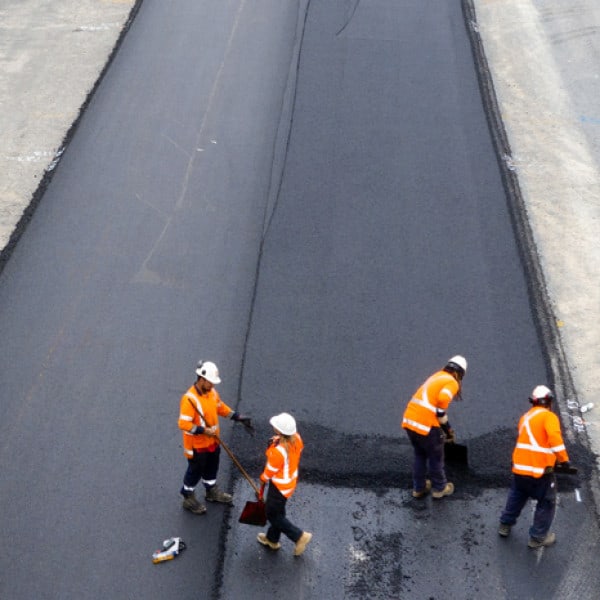
When planning any journey by road, be it a trip along the M1 or a drive around your home town, it’s likely that the first thing you do is look out for any roadworks that are happening on your route. You probably check your maps app to see if there are any tailbacks caused by work being carried out or, if you regularly drive along a motorway or road, you’ll know to expect traffic cones and closed lanes in places.
But who are the people who carry out this work? And what’s needed to become a successful road worker? Read on to find out.
Roles and responsibilities
In a nutshell, a road worker’s role is to build and repair roads and motorways. This can be to make the roads safer for travel or it could be to upgrade current conditions to create smoother surfaces.
To meet the requirements of this role, workers will need to build or resurface roads. Often, workers are tasked with widening them. Road workers also fix potholes and cracks in the surface, lay pavements and kerbs, and paint road markings. Other responsibilities include putting up crash barriers, updating road signs and traffic lights, and digging trenches to allow for cabling and pipes.
As well as these more apparent tasks, road workers have other duties that may not be as obvious. For instance, they are responsible for clearing hazards on roads by maintaining roadside verges and central reservations, as well as gritting roads to help drivers in icy or snowy conditions.
These works are usually booked in advance and carried out over an allotted time period. Motorists will be informed in advance of any work being carried out in their area, and there are resources that give drivers a chance to check where their route may be affected.
Qualifications needed
No formal qualifications are needed to be a road worker, but as this is a role that is very hands-on, employers will be looking for on-site experience. To gain the relevant skills, an apprenticeship is a good way into this line of work. Construction and utility companies often offer this type of real-world training.
Working conditions
This is a role that sees workers using hand tools such as shovels and picks, as well as power tools and industrial machinery, like pneumatic drills and road rollers. This makes it a hazardous environment and workers must be fully trained to operate this machinery in order to avoid an accident.
Another risk is the traffic. Road workers must control traffic flow around the work being done, so it’s important that everyone working on the site knows how to successfully street traffic away from the area.
To keep safe, workers must wear protective clothing, such as gloves, durable safety boots, and high-visibility clothing so that they can easily be seen, especially in adverse weather conditions where visibility can be poor. Hard hats and ear protectors are also needed. Employers should provide this protective wear.
As well as safety considerations, hours can be long, and workers can be expected to work away from home.
If this sounds like a career that could be for you, there’s no time like the present to start on your path to becoming a road worker.


![[pii_email_c0872b2275c5451a2577]](https://www.allnetarticles.net/wp-content/uploads/2021/09/How-To-Fix-Error-pii_email_c0872b2275c5451a2577-in-Email.png)
![[pii_email_c75373ce5b34bf577425]](https://www.allnetarticles.net/wp-content/uploads/2021/08/Fix-pii_email_c75373ce5b34bf577425-in-3-Working-Ways.jpg)
